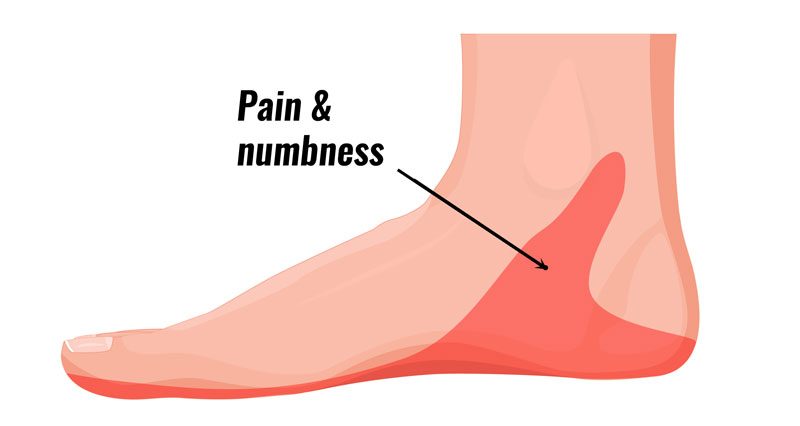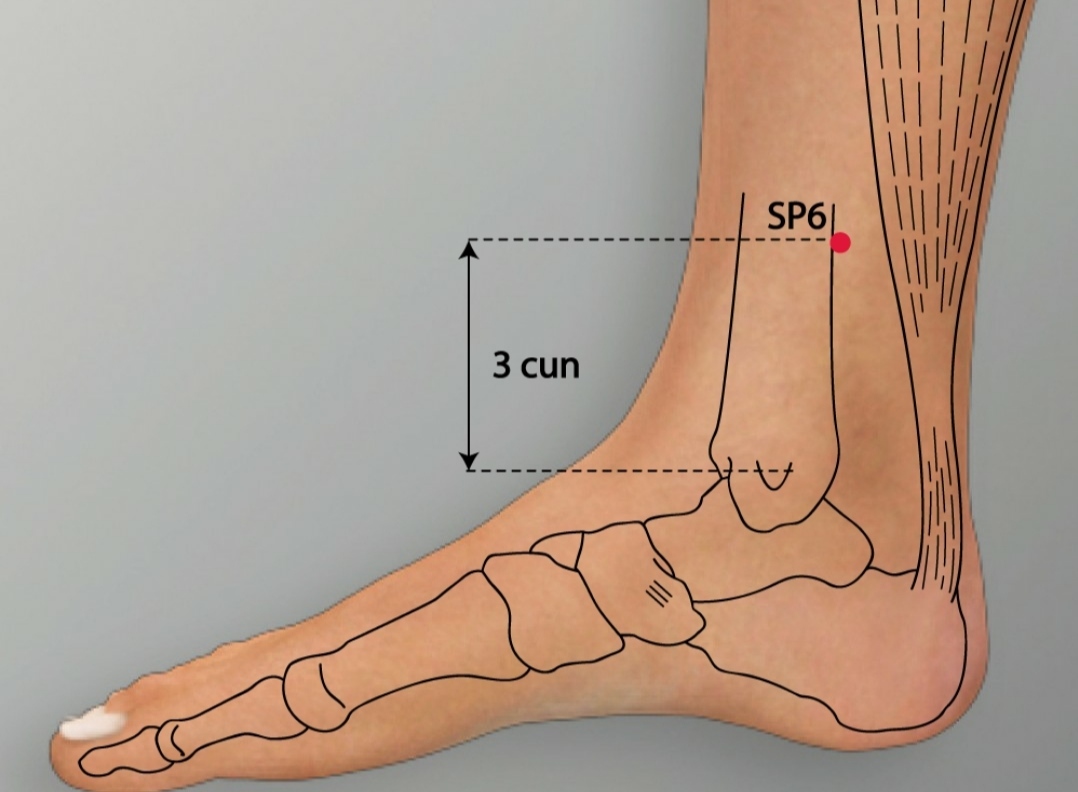Tarsal Tunnel Syndrome and Acupuncture Treatment in Tokyo
Tarsal Tunnel Syndrome (TTS) is a painful condition affecting the foot and ankle, often causing burning, tingling, or numbness. As a form of nerve entrapment, it can significantly impact mobility and quality of life. While conventional treatments like surgery or physical therapy are common, acupuncture offers a promising, non-invasive alternative. This guide dives deep into understanding TTS, how acupuncture can treat it, and the key acupoints used for relief. Whether you’re exploring holistic options or seeking to manage symptoms naturally, this article provides actionable insights.
- What is Tarsal Tunnel Syndrome?
- Symptoms of Tarsal Tunnel Syndrome
- Causes and Risk Factors
- Diagnosis
- Conventional Treatments for Tarsal Tunnel Syndrome
- Acupuncture Treatment
- How Acupuncture Works for Tarsal Tunnel Syndrome
- Benefits of Acupuncture for Tarsal Tunnel Syndrome
- Key Acupoints for Treating Tarsal Tunnel Syndrome
- Supporting Acupuncture with Lifestyle Changes
- Who Should Consider Acupuncture?
- Finding a Qualified Acupuncturist
- Potential Risks and Side Effects
- Acupuncture vs. Other Alternative Treatments
- Conclusion
What is Tarsal Tunnel Syndrome?
Tarsal Tunnel Syndrome occurs when the posterior tibial nerve, which runs through a narrow passageway (the tarsal tunnel) on the inner side of the ankle, becomes compressed or irritated. The tarsal tunnel is formed by bones and a fibrous band called the flexor retinaculum, and compression can result from inflammation, injury, or structural issues. The posterior tibial nerve controls sensation and muscle function in the sole of the foot, making TTS a debilitating condition when untreated.
Maybe You Need:
Symptoms of Tarsal Tunnel Syndrome
TTS symptoms can vary in intensity but often include:
- Burning or Tingling: Sensations in the sole, toes, or heel, often worsening with activity.
- Numbness: Loss of sensation in the foot, particularly the arch or toes.
- Pain: Sharp, shooting, or aching pain along the inner ankle or sole.
- Weakness: Difficulty with foot movements, such as toe flexion or standing on tiptoes.
- Worsening at Night: Symptoms may intensify during rest or after prolonged standing.
Symptoms may radiate up the calf or into the toes and often worsen with prolonged standing, walking, or wearing tight shoes.

Causes and Risk Factors
Tarsal Tunnel Syndrome can arise from various causes, including:
- Injury: Ankle sprains, fractures, or trauma that swell or scar the tarsal tunnel.
- Repetitive Stress: Activities like running, dancing, or prolonged standing that strain the foot.
- Structural Issues: Flat feet, high arches, or bone spurs that narrow the tarsal tunnel.
- Inflammation: Conditions like arthritis or tendinitis that cause swelling in the ankle.
- Masses: Cysts, varicose veins, or tumors compressing the nerve.
- Systemic Conditions: Diabetes, hypothyroidism, or obesity, which increase nerve vulnerability.
Risk factors include athletic activities, improper footwear, and occupations requiring long hours on the feet.
Diagnosis
Diagnosing TTS involves:
- Physical Examination: Testing sensation, strength, and reflexes in the foot and ankle.
- Tinel’s Sign: Tapping the tarsal tunnel to elicit tingling or pain.
- Nerve Conduction Studies: Measuring nerve signal speed to confirm compression.
- Imaging: X-rays, MRIs, or ultrasounds to identify structural causes like cysts or bone spurs.
Early diagnosis is critical to prevent permanent nerve damage or chronic pain.

Conventional Treatments for Tarsal Tunnel Syndrome
Before exploring acupuncture, it’s useful to understand standard TTS treatments, which include:
- Conservative Approaches:
- Orthotics: Custom shoe inserts to support the arch and reduce nerve pressure.
- Bracing or Splinting: Immobilizing the ankle to reduce inflammation.
- Physical Therapy: Exercises to strengthen foot muscles and improve alignment.
- Medications: Nonsteroidal anti-inflammatory drugs (NSAIDs) or corticosteroid injections to reduce swelling.
- Activity Modification: Avoiding high-impact activities or wearing supportive footwear.
- Surgical Options:
- Tarsal Tunnel Release: Cutting the flexor retinaculum to relieve nerve pressure.
- Decompression Surgery: Removing cysts, tumors, or other compressive structures.
While effective for some, surgery carries risks like infection, nerve damage, or incomplete symptom relief. Many patients turn to acupuncture to avoid invasive procedures or complement conventional care.
Acupuncture Treatment
Acupuncture, a key practice in Traditional Oriental Medicine (TOM), involves inserting fine needles into specific body points to restore energy balance and promote healing. For TTS, acupuncture targets pain, inflammation, and nerve dysfunction, offering a non-invasive alternative with minimal side effects. Its growing popularity stems from its ability to address both symptoms and underlying imbalances.
How Acupuncture Works for Tarsal Tunnel Syndrome
In TOM, TTS is often seen as a blockage of energy and blood in the Spleen, Kidney, or Liver meridians, which govern the lower limbs and feet. Acupuncture aims to:
- Reduce Inflammation: Needling stimulates anti-inflammatory responses, easing swelling in the tarsal tunnel.
- Improve Blood Flow: Enhanced circulation delivers nutrients and oxygen to damaged nerves and tissues.
- Alleviate Pain: Acupuncture triggers endorphin release, acting as a natural painkiller.
- Relax Muscles and Tendons: Tight tissues compressing the nerve are relaxed, reducing pressure.
- Support Nerve Repair: Stimulation of nerve pathways may enhance signal transmission and healing.
Western research, such as a 2020 study in Journal of Acupuncture and Meridian Studies, supports acupuncture’s efficacy in reducing pain and improving nerve function in peripheral neuropathies, including TTS.

Benefits of Acupuncture for Tarsal Tunnel Syndrome
Acupuncture offers several advantages:
- Non-Invasive: Avoids the risks and recovery time associated with surgery.
- Low Risk: Side effects are minimal, typically limited to mild bruising or soreness.
- Holistic: Addresses physical, emotional, and energetic imbalances for overall wellness.
- Customizable: Treatments are tailored to the patient’s specific symptoms and health profile.
- Complementary: Can be combined with orthotics, physical therapy, or medications for better outcomes.
Key Acupoints for Treating Tarsal Tunnel Syndrome
Acupuncturists select points based on the patient’s symptoms, the location of nerve compression, and TOM diagnosis. Below are the primary acupoints used for TTS, along with their locations and benefits.
- SP6 (Sanyinjiao) – Spleen 6
- Location: On the inner leg, about three finger-widths above the ankle bone, near the tibia.
- Benefits: SP6 strengthens the Spleen meridian, improves circulation, and reduces inflammation in the lower limbs. It’s a key point for foot and ankle pain.
- Use: Helps alleviate tingling and numbness in the sole.

- KI3 (Taixi) – Kidney 3
- Location: On the inner ankle, in the depression between the Achilles tendon and the ankle bone.
- Benefits: KI3 nourishes the Kidney meridian, supports nerve health, and relieves ankle pain.
- Use: Ideal for addressing local nerve compression and weakness in the foot.
- BL60 (Kunlun) – Bladder 60
- Location: On the outer ankle, in the depression between the Achilles tendon and the ankle bone.
- Benefits: BL60 reduces pain and inflammation in the ankle and foot, promoting energy flow along the Bladder meridian.
- Use: Effective for burning pain or stiffness in the tarsal tunnel.
- GB40 (Qiuxu) – Gallbladder 40
- Location: In the depression just in front of and below the outer ankle bone.
- Benefits: GB40 clears blockages in the Gallbladder meridian, reducing pain and improving mobility in the foot.
- Use: Helps relieve radiating pain and supports ankle stability.
- LR3 (Taichong) – Liver 3
- Location: On the top of the foot, in the depression between the first and second toes.
- Benefits: LR3 regulates the Liver meridian, reduces muscle tension, and alleviates nerve-related pain.
- Use: Useful for numbness and cramping in the toes or sole.

- Local Points Around the Ankle
- Examples: Points like KI6 (Zhaohai) or SP5 (Shangqiu) near the tarsal tunnel.
- Benefits: Local points directly target inflammation and compression in the tarsal tunnel, improving nerve function.
- Use: Needled to reduce swelling and pain at the site of entrapment.
- Distal Points for Systemic Balance
- Examples: ST36 (Zusanli) below the knee or LI4 (Hegu) on the hand.
- Benefits: These points boost overall energy, support nerve health, and enhance treatment outcomes.
- Use: Included to address underlying imbalances contributing to TTS.
Typical Acupuncture Session
A typical acupuncture session for TTS involves:
- Assessment: The acupuncturist evaluates symptoms, medical history, and foot function to create a tailored plan.
- Point Selection: 6–12 acupoints are chosen, combining local, distal, and systemic points.
- Needle Insertion: Sterile, single-use needles are inserted and left in place for 20–30 minutes.
- Additional Techniques: Electroacupuncture or moxibustion (heat therapy) may be used to enhance effects.
- Aftercare: The practitioner may recommend stretches, footwear changes, or orthotics to support recovery.
Sessions typically occur 1–2 times per week for 6–12 weeks, depending on symptom severity.
Supporting Acupuncture with Lifestyle Changes
To optimize acupuncture’s benefits, consider these lifestyle adjustments:
- Footwear: Wear supportive shoes with proper arch support and avoid high heels or tight shoes.
- Orthotics: Use custom inserts to correct flat feet or high arches.
- Exercises: Perform ankle stretches and strengthening exercises as recommended by a physical therapist.
- Weight Management: Reducing body weight can decrease pressure on the tarsal tunnel.
- Anti-Inflammatory Diet: Incorporate foods like berries, fatty fish, and leafy greens to reduce systemic inflammation.
- Rest and Elevation: Elevate the foot during rest to reduce swelling.
These changes can enhance acupuncture’s effectiveness and prevent symptom recurrence.
Who Should Consider Acupuncture?
Acupuncture is suitable for:
- Patients with mild to moderate TTS seeking non-invasive relief.
- Those who haven’t fully responded to conservative treatments like orthotics or medications.
- Individuals looking to avoid or delay surgery.
- People interested in holistic approaches to complement conventional care.
Acupuncture may not be ideal for:
- Severe cases with significant nerve damage or muscle atrophy.
- Patients with bleeding disorders or those on blood thinners (consult a doctor first).
- Pregnant women (certain acupoints are contraindicated).
Always consult a healthcare provider before starting acupuncture, especially if you have underlying conditions.

Finding a Qualified Acupuncturist
To ensure safe and effective treatment:
- Verify Credentials: Choose a licensed acupuncturist certified by organizations like the National Certification Commission for Acupuncture and Oriental Medicine (NCCAOM).
- Seek Experience: Select a practitioner with expertise in treating nerve-related or foot conditions.
- Check Reviews: Look for patient feedback on platforms like Google or Yelp.
- Discuss Goals: Ensure the acupuncturist understands your symptoms and treatment expectations.
Many insurance plans cover acupuncture, so check with your provider for coverage details.
Potential Risks and Side Effects
Acupuncture is generally safe, with minimal side effects, including:
- Temporary soreness or bruising at needle sites.
- Mild dizziness or fatigue after treatment.
- Rare risks like infection (prevented with sterile needles).
Choosing a qualified practitioner minimizes these risks.
Acupuncture vs. Other Alternative Treatments
How does acupuncture compare to other holistic options for TTS?
- Chiropractic Care: Focuses on spinal and joint alignment but may not directly address nerve compression in the foot.
- Massage Therapy: Relieves muscle tension but doesn’t target nerve pathways as effectively as acupuncture.
- Herbal Medicine: Supports general health but lacks acupuncture’s precision for localized nerve issues.
Acupuncture’s ability to modulate nerve function and reduce inflammation makes it a strong choice for TTS.
Conclusion
Tarsal Tunnel Syndrome can limit mobility and cause persistent discomfort, but acupuncture offers a promising path to relief. By targeting key acupoints like SP6, KI3, and BL60, this holistic practice reduces pain, inflammation, and nerve compression while promoting healing. Paired with lifestyle changes like proper footwear and exercises, acupuncture can help you regain foot function and improve quality of life.
If you’re considering acupuncture, consult our licensed practitioner to develop a personalized treatment plan. With consistent care, you may find lasting relief from TTS without invasive procedures.
Fuji Wellness:
- Address: 132-0031 Matsushima 1-chome, 21-14, Tokyo, Japan
- Chat with us: Click here
- Email: sunnyphamsensei@gmail.com



